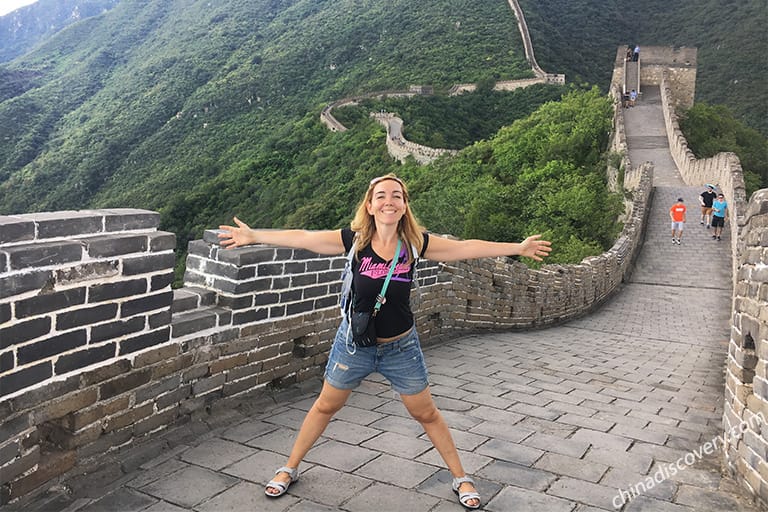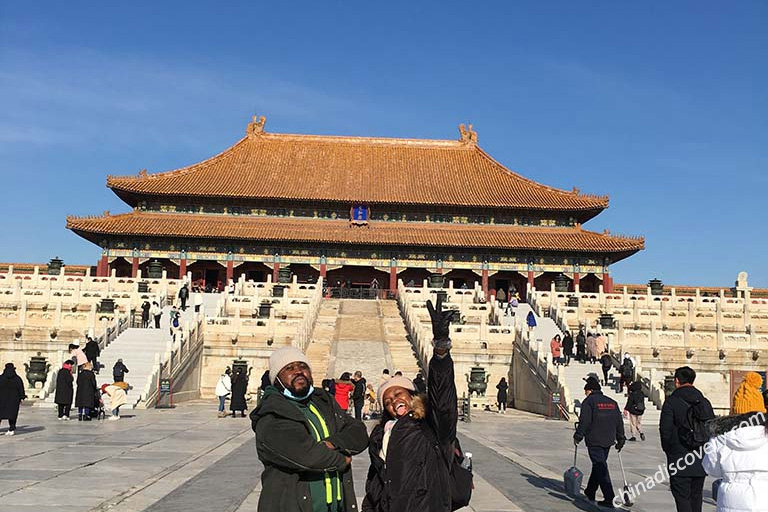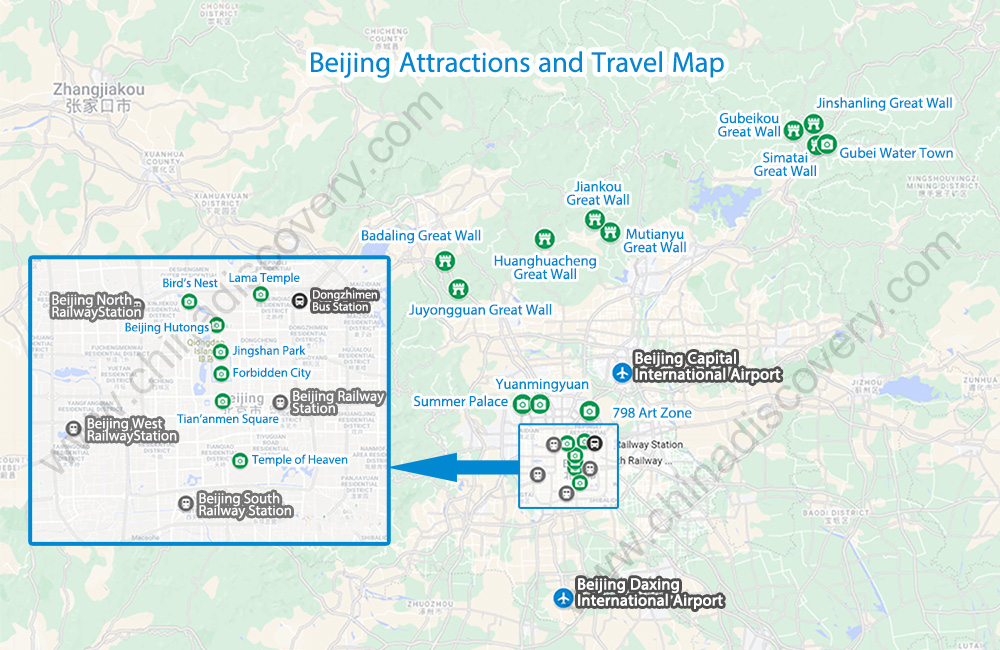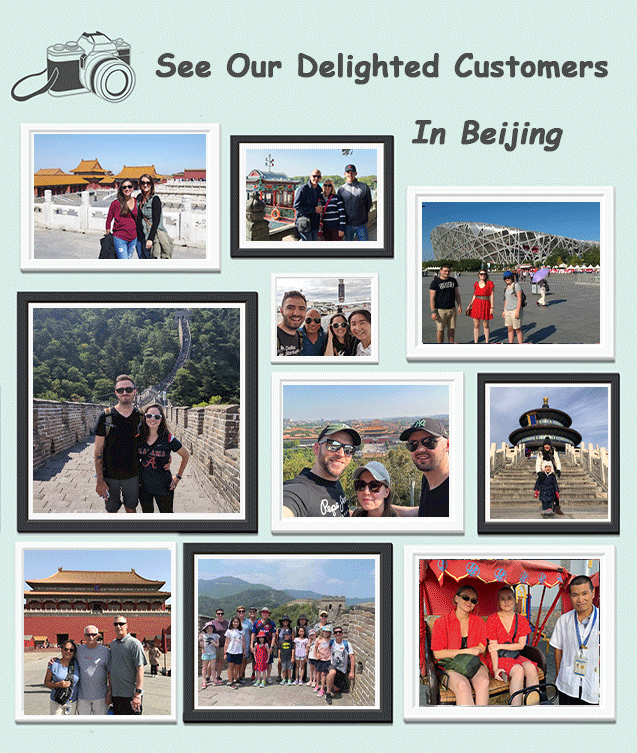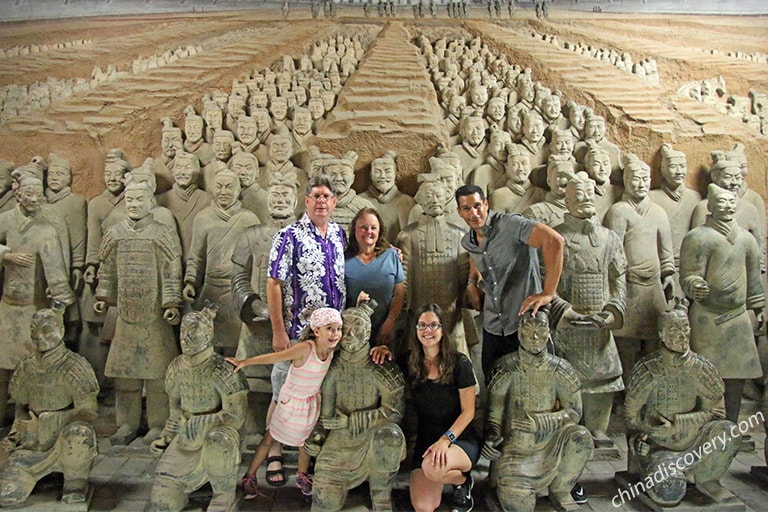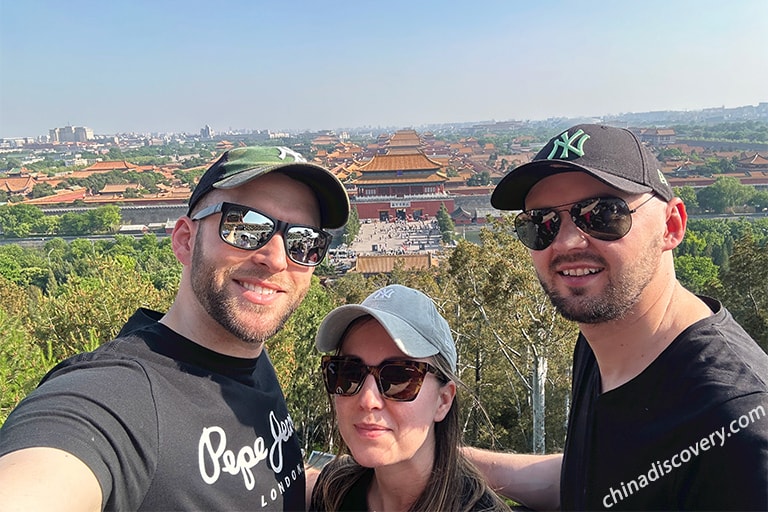Brief Impression about Temple of Heaven - Facts
Located in the central area of Beijing City and also a part of the New World Heritage Site - Beijing Central Axis, Temple of Heaven is one of the most brilliant ancient architectures in China and also an outstanding masterpiece of classic imperial buildings throughout Chinese history. The site was firstly built in 1420, the 18th reign year of Emperor Yongle (永乐皇帝), then expanded and reconstructed by the subsequent emperors of both Ming and Qing dynasties, and had served as the holy place for emperors to pay homage to Heaven and to pray for a year of rich harvest.
The Temple of Heaven is the best place in Beijing to explore traditional royal sacrificial culture of ancient China. In ancient China, the emperors attached great importance to the sacrifice to the Heaven because they were believed to be the son of Heaven and they ruled the county on behalf of Heaven. To show their respect and gratefulness to Heaven, the emperors of Ming and Qing dynasties moved from Forbidden City to encamp in the Temple of Heaven with their retunes twice a year. The emperor would pray to Heaven for good harvests on the altar. Compared with all other sacrificial sites in the world, the Temple of Heaven is the largest not only in size and scale, but also the forms and traditions.

World Heritage Site - Temple of Heaven
(Photo by Our Guest)
Outstanding Universal Value by UNESCO
In 1998, UNESCO listed the Temple of Heaven in the World Heritage Sites List with the description as “a masterpiece of architecture and landscape design which simply and graphically illustrates a cosmogony of great importance for the evolution of one of the world’s great civilizations...” See UNESCO’s three criterions for inscribing the Temple of Heaven on World Heritage Lists, reference from UNESCO Official Website (https://https://whc.unesco.org/en/list/881/)
"Criterion (i): The Temple of Heaven is a masterpiece of architecture and landscape design which simply and graphically illustrates a cosmogony of great importance for the evolution of one of the world’s great civilizations."
"Criterion (ii): The symbolic layout and design of the Temple of Heaven had a profound influence on architecture and planning in the Far East over many centuries."
"Criterion (iii): For more than two thousand years China was ruled by a series of feudal dynasties, the legitimacy of which is symbolized by the design and layout of the Temple of Heaven."
As a part of the Beijing Central Axis, a building ensemble exhibiting the ideal order of the Chinese capital, was listed as World Heritage Sites in 2024 with other 14 nominated components.
Temple of Heaven History and Development
Ming Dynasty - Built
The Empire Ming founded the capital in Nanjing in its early period. Zhu Yuanzhang (朱元璋), the first emperor built the Temple of Heaven and Earth (天地坛) on the Zhongshan Mountain. Later in 1447, Emperor Yongle moved the capital to Beijing, and also constructed the Temple of Heaven and Earth on the southeast of Forbidden City as a place for paying homage and praying to the Heaven in 1420. Yongle followed the tradition of sacrificing to the heaven and earth together in a same site - Dasi Pavilion (大祀殿), which was the main building of Temple of Heaven and Earth. The tradition had lasted more than 160 years until the Emperor Jiajing (嘉靖皇帝) broke it. He built four sites separately as Temple of Heaven, Temple of Earth, Temple of Sun, and Temple of Moon in the 16th century. Since then, the structure had been kept by the following emperors.
Qing Dynasty - Expansion
In 1644, the Qing Dynasty was founded. Qing also followed the tradition of sacrifice in the Ming Dynasty, and set the Temple of Heaven as the place for sacrifice. During the reign of Emperor Qianlong (乾隆皇帝, 1736~1795), a large-scale restoration and expansion was made. The old palaces, pavilions, stages, towers, paths, etc. were renovated and many new buildings were launched, including the famous Echo Wall (回音壁). Qianlong also ordered to plant thousands of trees around the temples.
People's Republic of China - Renovation
The Temple of Heaven once suffered great damage from wars. In August of 1900, the armies of Eight-Nation Alliance invaded Beijing, and occupied the Temple of Heaven. Many relics were destroyed. The following civil wars also damaged the Temple of Heaven. Fortunately, several large renovations were launched to preserve the Temple of Heaven after the establishment of the People's Republic of China in 1949. Now it serves as a historical site and also a public park.
Architectural Art, Layout & Geomantic Omen
The Temple of Heaven is featured in precise structure, peculiar design, and magnificent decoration. Covering more than 267 hectares (660 acres), the Temple of Heaven is the general reference of Huanqiu Altar (圜丘) and Qigu Altar(祈谷) which are located separately at an axle path from south to north - Danbi Bridge (丹陛桥). The most important building of Huanqiu Altar is Huangqiongyu Hall (皇穹宇). Qigu Altar has Qinian Hall (祈年殿), Huangqian Hall (皇乾殿) and Qinian Gate (祈年门), etc.
Ancient Chinese mythology believed that Heaven is round and the Earth is square, which is fully embodied in the design of Temple Heaven. Two long-sketching cordons of wall surrounded the temple complex. The southern outer wall was circular like a taller semi-circular representing Heaven. The northern wall is shorter and rectangular, and stands for the Earth. Both the Huanqiu Altar and Qigu Altar are round, and stand on two square yards.
The brilliant artisans of Qing Dynasty built supernatural sites - Echo Wall, Three Echo Stone, and Conversation Stone according to the science of acoustics.

Our Guests Visiting Temple of Heaven in Jan. 2019
What to See in Temple of Heaven
Important Buildings & Sights
Qinian Hall (Hall of Prayer for Good Harvests) is the most magnificent building in the Temple of Heaven. It is a wooden triple-gable circular pavilion which is 38 meters high with a three-level marble stone base. The ancient emperors prayed for good harvests here. There are 28 pillars propping up the hall. The inner 4 pillars are large, and stand for four seasons. The middle 12 pillars represent the twelve months. The outer 12 pillars indicate 12 periods of a day.
Huangqiongyu Hall (Imperial Vault of Heaven) is smaller with only one circular gable and one level of marble stone base compared with Qinian Hall. It is the place to enshrine the worshiping tablets of Gods. Inside the hall are pillars and vaults decorated with beautiful paintings and carvings. Outside is a circular wall - Echo Wall which can transmit sounds over long distances.
Huanqiu Altar (Circular Mound Altar) is an empty circular platform with three levels of marble stones. Vivid dragons were carved on the stones to stand for the emperors. The number nine stands for power as well as the emperors in ancient China. You will surprisedly find the balusters and steps are either the sacred number nine or its multiples. In ancient time, the emperors burn the offerings for Heaven in a stove on the platform.

Magnificent Building of Huangqiongyu Hall

Tourists Visiting the Huanqiu Altar
☛ 5 Days Beijing In-depth Exploration Tour of History and Hidden Treasures
Night View & Light Show
Not only is it magnificent architecture and rich history and culture, but the Temple of Heaven also attracts many tourists with its beautiful night view. After nightfall, the Temple of Heaven complex and grounds are illuminated with exquisite lights, revealing a mesmerizing night view. Ancient buildings, cloisters and trees are outlined by brilliant lights, creating an atmosphere of tranquility and mystery. Stroll through the Temple of Heaven at night and enjoy the beautiful scenery of the buildings illuminated by the lights. At night, the Temple of Heaven is less crowded and offers a quieter and more private sightseeing experience.
Note: Temple of Heaven is divided into two parts - the public park area and the tourist area. The public area is open from early morning to later night, but the tourist area including Qinian Hall, Echo Wall, Huanqiu Altar, etc. are closed at night. The Temple of Heaven is only lit on Fridays, Saturdays, and on the evenings of major festivals.

Landmark of the Temple of Heaven - Qinian Hall
(Photo by Our Guest)
☛ 4 Days Beijing Essence Tour with Simatai Great Wall Night Sightseeing
Local Folk & Activities
Temple of Heaven is four times the size of the Forbidden City, but its building area is only 5%, and the rest is covered by trees. There are over 3,000 ancient trees that are more than hundreds years old, as well as cute squirrels and a wide variety of birds. Not just about the good ecological environment, the public area now also serves as an entertaining and morning exercise place for locals. People living near usually like to take exercise or take part in folk activities in the park, such as running, cycling, playing Tai Chi, etc. You can spare some time to stroll leisurely in the park to get involved in the interesting activities, or just experience the peaceful atmosphere of local people’s living.

Local People Playing Tai Chi in the Park
Temple of Heaven Visiting Route
There are four gates for entering and exiting the Temple of Heaven. For a smooth and pleasant visit, travelers are suggested to start the exploration from the South Gate. Entering the gate, you will first visit the Huanqiu Altar and its surroundings, such as Huangqiongyu Hall, Echo Wall, Kitchen for Sacrifice, etc. Then walk through the solemn path of Danbi Bridge, and get to the iconic Qinian Hall. After explore the surrounding sites including Huangqian Hall, then continue your trip to the west of Qigu Altar to see the Flower Garden. On the south of the garden is the Fasting Palace (斋宫) where the emperor stayed during sacrificial ceremonies. After the sightseeing, leave the site from the West Gate.
Recommended visiting route (about 2 ~ 3 hours): South Gate - Circular Mound Altar - Echo Wall - Imperial Vault of Heaven - Danbi Bridge - Hall of Prayer for Good Harvests - Imperial Hall of Heaven - Flower Garden - Fasting Palace - Divine Music Administration (神乐署) - West Gate
Temple of Heaven Location & Transportation
Where is the Temple of Heaven
The Temple of Heaven is located in the central area of Beijing City and on the Beijing Central Axis, which is also the attraction-gathering region. The famous Forbidden City (Palace Museum) and Tiananmen Square are conveniently situated at the northwest of Temple of Heaven within short walking distance.
- about 5 km (about 20 minutes by car) from Tiananmen Square
- about 5.5 km (about 30 minutes by car) from Forbidden City
- about 10 km (about 40 minutes by car) from Lama Temple
- about 30 km (about 1 hour by car) from Summer Palace
- about 80 km (about 2.5 hours by car) from Mutianyu Great Wall
Transfer to/around Temple of Heaven
The visit to Temple of Heaven takes about 1 ~ 2 hours, so it is usually recommended to tour with other sites in Beijing city, such as the Tiananmen Square, Forbidden City, Jingshan Park and Hutongs as a full day tour package which has covered convenient and private transfer to and around the Temple of Heaven.
☛ 4 Days Classic Beijing Tour Package (Leisure Paced)
☛ 3 Days Beijing Essential Short Stay Tour (Visa free)
☛ 2 Days Beijing Best Highlights Tour (Hotel Pickup)
Subway and public buses are also available for independent travelers. You can take subway Line 5, and exist at Tiantan Dongmen Station which is only several minutes’ walking away from the East Gate of Temple of Heaven. There are also many buses that pass by Temple of Heaven, and you can get off at any of the four entrances by bus to enter the park.
Travel to Temple of Heaven with China Discovery - Top Recommended
Although the Temple of Heaven is located in the center of the Beijing city, you may encounter troublesome traffic jam or language barriers along your way to there. If you want to get rid of the hustle of public transportation and troublesome navigation, you can book a Temple of Heaven tour package that covers sightseeing, dining, lodging, and transfer from us. As part of our valuable Beijing tour packages, our skilled driver and experienced guide will pick you up wherever you are in Beijing including the airport, train stations, and busy scenic areas, etc. It's time-saving and much more safe and you will be escorted all the way to the Temple of Heaven with comfortable travelling experience and professional travelling guidance. If you need any help, please feel free to contact us >>
 China Discovery's Local Private Transfer
China Discovery's Local Private Transfer
Temple of Heaven Travel Tips
Ticket & Opening Hours
Ticket Price
◆ Admission Tickets:
April 1st - October 31st (high season): CNY 15
November 1st - March 31st (low season): CNY 10
◆ Joint Tickets (Admission Tickets + Qinian Hall + Echo Wall + Huanqiu Altar):
April 1st - October 31st (high season): CNY 34
November 1st - March 31st (low season): CNY 28
◆ Attractions Tickets:
Qinian Hall + Echo Wall + Huanqiu Altar: CNY 20
Divine Music Administration: CNY 10
Fasting Palace: free
Opening Hours
◆ Public Park Area:
April 1st - October 31st (high season): 06:00 ~ 22:00 (Last admission: 21:00)
November 1st - March 31st (low season): 06:30 ~ 22:00 (Last admission: 21:00)
◆ Tourist Area (including Qinian Hall, Echo Wall, Huanqiu Altar, Fasting Palace, Divine Music Administration, etc):
April 1st - October 31st (high season): 08:00 ~ 18:00 (Last admission: 17:30)
November 1st - March 31st (low season): 08:00 ~ 17:00 (Last admission: 16:30)
Note: The above attractions are open from Tuesday to Sunday and closed on Mondays except for statutory holidays.
Tour Guide Service
Independent travelers can rent the self-service audio guide device at the four gates of Temple of Heaven (Chinese, Cantonese, English, French, German, Spanish, Japanese, Korean, etc.) You can also hire a personal tour guide in the park to get a more detailed explanation. We highly recommend you to choose our Beijing tour packages, and all of our tours offer English-speaking guides and private drivers for a worry-free itinerary. If you need any help, please feel free to contact us.
Best Time to Visit
Spring (March ~ May) and Autumn (September ~ November) is the best time to visit the Temple of Heaven. But actually, the Temple of Heaven is suitable for travel all year round. You can see the blooming lilac during the middle of April. On summer days, the whole park is decorated by flourishing green trees. The cool autumn is the best season when the sky is clear and blue. Winter is cold, but you can get rid of the crowds, and focus on exploring the fabulous architecture. If you don't want to be overwhelmed by the crowds, please avoid visiting during Chinese Public Holidays.
How to Plan Your Travel in Beijing
To explore Beijing's highlights, such as the Forbidden City, the Great Wall (with Mutianyu as the top recommendation), the Temple of Heaven, the Summer Palace, and the Beijing Hutongs - plan for about 4 days, including arrival and departure.
☛ 4 Days Classic Beijing Tour Package
☛ 3 Days Beijing Essential Highlights Tour
If you have extra days, consider hiking the scenic Jinshanling Great Wall, enjoying the stunning night views of Simatai Great Wall, or visiting other sections like Huanghuacheng, Gubeikou, and Juyongguan.
☛ 4 Days Beijing Essence Tour with Simatai Great Wall Night Sightseeing
☛ 4 Days Classic Beijing Tour with Jinshanling Great Wall Hiking
Families with children should not miss Universal Beijing Resort, while museum enthusiasts should visit the National Museum of China, home to the nation's most valuable treasures.
☛ 5 Days Beijing Family-friendly Tour with Universal Studios Fun
☛ 5 Days In-depth Beijing Tour with History and Culture Discovery
As a major transportation hub, Beijing offers easy access to other top destinations in China by flight or train, such as Xi'an, Shanghai, Guilin, Chengdu, and Tibet. China Discovery provides a variety of tour packages from Beijing, or we can customize an itinerary to suit your preferences.
Recommended Beijing Tours with Other Top Cities in China:
☛ 6 Days Classic Beijing Xian High-speed Train Tour
☛ 8 Days Best of China Tour (Beijing - Xian - Shanghai)
☛ 10 Days Classic China Tour from Beijing (Beijing - Xian - Guilin - Shanghai)
We have helped many global travelers enjoy their memorable wonderful trips to Beijing for the past few years. Among them, a special team of over 50 VIPKID teachers from North America traveled with us to see their dear studends in China with amazing experience in Beijing and shared us their special travel story! Travel with China Discovery to create your great China trip memories!
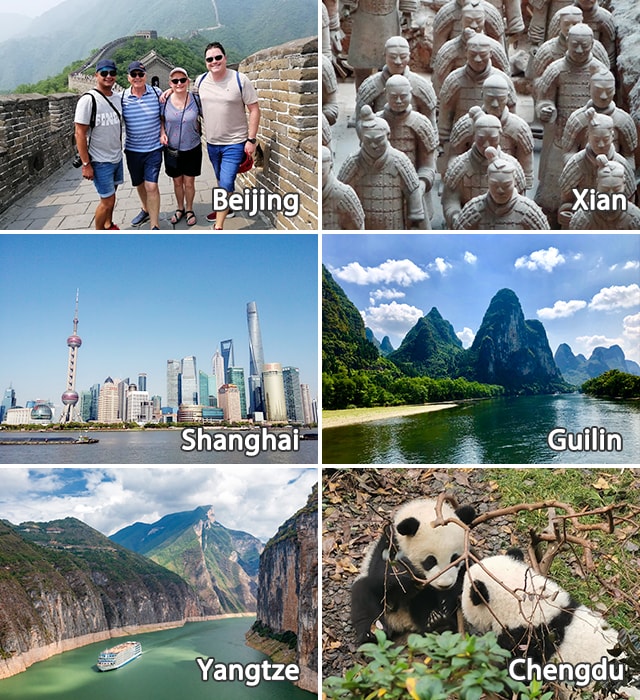 Top China Recommended Destinations
Top China Recommended Destinations
Keep Reading About Beijing Attractions
- Great Wall of China
- Mutianyu Great Wall
- Jinshanling Great Wall
- Forbidden City
- Summer Palace
- Tiananmen Square
- 798 Art District
- Jingshan Park
- Beijing Hutong
- National Museum of China
- Gubei Water Town
- Lama Temple
- Yandaixie Street
- Nanluoguxiang
- Beijing Central Axis
- Beijing Olympic Park
- Old Summer Palace
- Badaling Great Wall
- Huanghuacheng Great Wall
- Simatai Great Wall
- Juyongguan Great Wall
Top Beijing Tours & Travel Guide
- Forbidden City Tours
- Popular Beijing Tours
- Great Wall Hiking Tours
- Beijing Visa Free Tours
- Beijing Layover Tours
- Tpo 6 Beijing Vacations
- Beijing Family Tours
- Beijing Travel Guide
- Beijing Travel Articles
- Great Wall Trip Planning Guide
- How to Plan a Beijing Trip
- Things to do in Beijing
- Top Experiences Recommended by LP
- Featured Activities in Beijing
- How to Get to & around Beijing
- Weather & Seasons in Beijing
- Beijing Maps
- Beijing 144/24 Hour Visa Free
- Recommended Hotels in Beijing
- Beijing Photo Gallery
- Top Beijing Food and Snacks
- Beijing Shopping
- Beijing Nightlife
- Beijing FAQs & Tips
- Forbidden City Travel Tips
- Forbidden City Facts
- Forbidden City Map
- Hall of Supreme Harmony
- Imperial Garden
- Nine-dragon Screen
- The Gallery of Clocks
- The Treasure Gallery
- Palace Museum Collections
- How to Visit the Forbidden City
- Forbidden City Photography Tips
- Forbidden City Weather & Seasons
- How to Book Forbidden City Tickets
- How to Get to Forbidden City
- How to Transfer from Beijing Airports
Recommended Beijing Tours
Top 3 Beijing tours chosen by most customers to explore Beijing in the best way. Check the detailed itinerary, or tailor your own trip now with us.

8 Days Best of China Tour (Flight/Bullet Train Covered)
Beijing / Xian / Shanghai
Start planning your tailor-made holiday to China by contacting one of our specialists. Once inquired, you’ll get a response within 0.5~23.5 hours.
Customize a TripHave a question? Get answers from our travel experts or guests
- Your Question:
- Your Name:
- Your Email:
- Submit


























